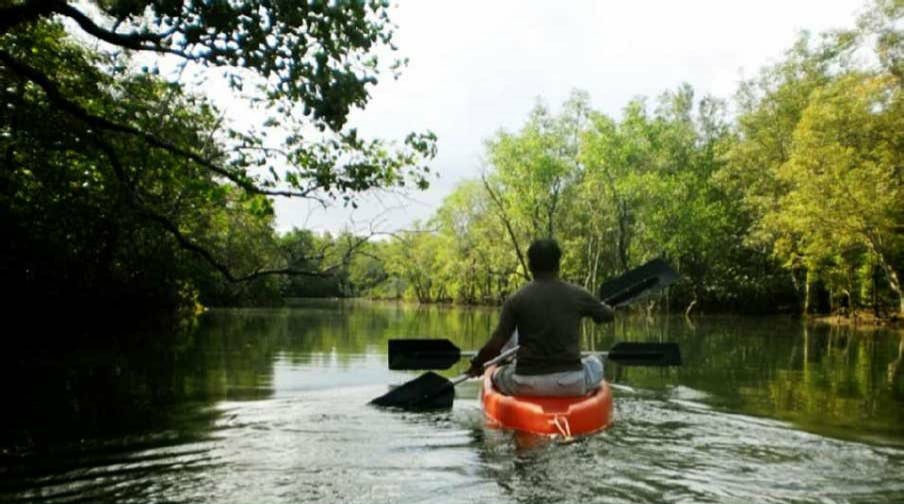Railway project ordered tweaked to spare Subic mangroves

ENDANGERED These patches of mangroves within the 30-hectare Binictican-Malawaan site are among the natural resources in the Subic Bay Freeport that are considered protected areas. —PHOTO FROM THE WEBSITE OF THE SUBIC BAY METROPOLITAN AUTHORITY
CLARK FREEPORT—The government will ensure that the 42 hectares of mangroves in Subic Bay Freeport’s watershed reserve will not be adversely affected by the planned construction of a China-funded railway project, an official of the Department of Transportation (DOTr) said on Friday.
The promise to protect the two wide patches of mangroves was made in response to appeals by the Save Subic Bay Mangroves Coalition, a private group of residents and business leaders, for the project proponents led by the DOTr to spare the area from damage.
“As instructed by Transportation Secretary Arthur Tugade, we have to make sure that we are observing all of the necessary environmental requirements and safeguards,” Timothy John Batan, DOTr undersecretary for railways, said in a television interview.
Early this week, Tugade also told the contractor of the China-funded Subic-Clark Railway Project (SCRP) to build a logistics terminal away from the mangrove forest.
The P50-billion freight railway will connect Subic and Clark as a logistics corridor, according to documents of the Bases Conversion and Development Authority (BCDA).
Article continues after this advertisement‘Clash in alignment’
Batan said he met with the members of the coalition on June 17 and promised to bring to Tugade’s attention their concern over the project’s effect on the mangrove forest.
Article continues after this advertisement“This mangroves situation, or clash in alignment, is an instruction that we have already given to our contractor to explore for an alternative solution, so that we can address the concerns involving the mangroves,” Batan said.
The Inquirer reported on Tuesday the risk posed on the mangroves within the 30-ha Binictican-Malawaan patch and the 12-ha Boton site, where the SCRP’s logistics terminal is planned to be built.
Tugade told the Inquirer on Tuesday that he had “already given instructions to revisit the alignments.”
But a memorandum for a change in alignment to skirt the mangrove forest has yet to be issued, the Inquirer learned.
Batan said the consortium of AECOM Singapore Pte. Ltd. and Projects Design Plus Architecture Management Corp., as well as the China Harbour Engineering Company (CHEC), had been told to “start developing alternatives.”
He said the CHEC was in the process of doing the detailed engineering design.
In the BCDA documents, the Chinese company reported that 7.3 ha of mangroves would be affected in the first phase.
Protected by decree
Among the six patches of mangroves totaling 62 ha within the Subic Bay Freeport, the Binictican-Malawaan and Boton sites are the widest.
These mangroves are among the port’s natural resources that are protected by Presidential Proclamation No. 926 signed by then President Corazon Aquino in 1992.
The proclamation was signed a year after the Philippine Senate ended a treaty giving rights to the United States to lease military bases and station troops in the then Subic Bay Naval Base, Clark Air Base, and their extensions.
The Subic Bay Metropolitan Authority, its ecology center and the environmental coalition have yet to comment on the DOTr move.
The railway, 85 percent of which is funded by China’s official development aid, will pass through the Roosevelt protected landscapes, three ancestral domains and 37 villages in Clark Freeport in the provinces of Bataan and Pampanga and the cities of Olongapo and Angeles.
A total of 673 families will be affected, the BCDA documents showed.
In the project documents, among the avowed claims of the government was to “support the current industrial activities and potential demand for freight and passenger services along the Subic-Clark corridor.” INQ